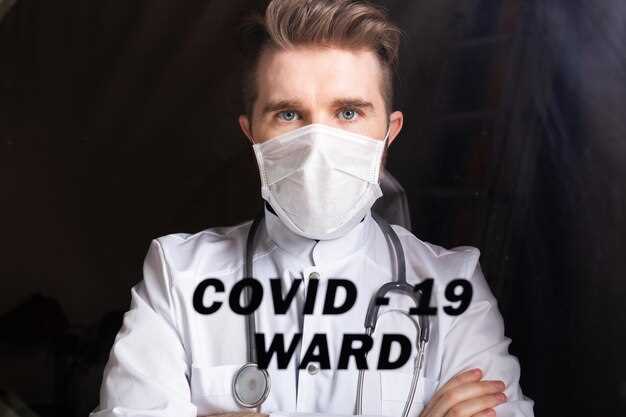Schedule an urgent evaluation for monday and start a detailed diary of symptoms to guide care, noting any heavy fatigue, weakness in the muscles, and changes in morning routines. Keep this record accessible for the treating team and adjust care promptly as findings evolve.
In view of coverage from backgrid and peacock, thousands mentioned the moment, stars seen on camera. despite the chatter, the emphasis should be on a clinician-guided plan to address progression and symptoms.
Advocating for transparency, set a care plan within weeks with the goal of preserving function and quality of life. Arrange tests that measure progressive changes in muscles, and share results with the care team to guide ongoing management, while avoiding heavy exertion until cleared. If implants include metals or sensors, disclose them before diagnostics.
Keep a morning check-in and weekly notes to map progression over weeks, and use that data to adjust therapy and support. If new symptoms emerge, contact the care team immediately, maintaining emotional support for the individual and their family. The overarching goal is steady maintenance of function and independence through careful monitoring and professional guidance.
Timeline and details of the first sighting after the Emmys tribute
Key moments
On monday, heavy media focus surrounded a living scene in the west theater district during the post-show moment. abcs outlets and entertainment sites highlighted the mcsteamy figure, with a calm, emotional demeanor and a restrained greeting to fans. Images circulated widely, revealed a relaxed look and a soft smile as fans offered supportive waves from a safe distance.
The moment had an impact on the award calendar and the broader narrative. The focus remains on work commitments, upcoming projects, and a measured media approach being refined. The content indicates that a scheduled public appearance plan stays in motion; the absence of more frequent public moments remains noted, while the discourse among stars leans toward a promising path that could extend to Disney platforms.
Public response
Muscles appeared defined in a casual top, and no smoking indicators were observed during the brief moment, according to on-site photographers. The scene carried an emotional tone, yet remained controlled; observers describe the mood as grounded, with living presence that resonated across the room.
Learn from the coverage: when media questions arise, reps explained that the emphasis is on ongoing work and community events rather than a single moment. Revealed footage becomes a feature for fans and a talking point for abcs and other outlets. The focus remains audience-driven, with fans hoping for a continued arc in the award cycle.
What specific claims are being made about ALS signs
Recommendation: Verify onset timing and progression via credible clinical statements and dated images; avoid inferring a diagnosis from a single moment or clip.
The following points summarize reported claims with direct language and caveats, using the requested terms where appropriate.
- The onset is described as slow at first, with progression that remains worse over time; expressed by supporters as a potential trajectory in several cases.
- Imaging and observed behavior show a moment of lateral weakness; images capture subtle motor changes in a single moment; with that evidence, thats not definitive and should be interpreted with caution.
- Genetic context is debated: known genetic factors are cited in some accounts, while others point to absent family history; careful interpretation is required to avoid conflating correlation with causation.
- A daughter expressed concern that there is still much to learn; tonight’s awards coverage included remarks attributed to danes and rebecca; told that onset could reflect a genetic component; thats a claim advocates stress should be handled with caution and accuracy.
- The media context includes disney-backed campaigns and a view on how quality information can shape perception; the aim is to support advocacy and research rather than to overstate implications.
- Palliative care framing: advocates emphasize palliative options to maintain good quality of life, with focus on comfort; having that approach can inform patient support and caregiver decision-making.
- Readers should be careful to rely on medical confirmation, when possible, and to interpret long-running reports in context; absence of verified data means avoiding conclusions until credible sources publish updates.
How to assess credibility: sources, photos, and context
Begin with a live cross-check: rely on at least two independent sources and any official statement before taking media claims seriously; since quality improves with direct evidence, document the view and save a dedicated section for notes; if a reference to rebecca appears, consider it with difficulty and verify against primary records.
Photos and video: inspect provenance, timestamps, and framing; compare multiple angles within the scene to detect inconsistencies; examine lighting and shadows for signs of digital alteration; do not take this claim at face value; if captions or posts call something out as speculation, separate opinion from fact; if you see the term gayheart, treat it as rhetorical and rely on verifiable details; watch for slurred audio cues and note lateral movements that could mislead.
Timeline and context: verify onset details and whether representation aligns with a planned schedule; absence of corroboration should raise caution; if a source notes that key data were skipped, that becomes a red flag; the indicator may be noticeably weak without direct quotes; the framing can be called into question.
Medical and anatomical cues: treat any reference to brain or spinal topics with caution and demand official medical context; avoid drawing conclusions from lateral cues; without solid documentation, avoid implying health status; mitigate risk by requiring corroboration; focus on observable facts and the care taken in reporting, not risk to living individuals or insinuations about life.
Context for audience and advocacy: prefer outlets that present a progressive, balanced view rather than advocacy that would skew perception; if a piece advocates a stance or calls for renew of policy, verify the basis and seek corroboration; note whether the source supports a long-running feature or a broader project and whether the goal is clearly defined for living audiences; if a source called out a claim as unverified, pursue further evidence.
Practical steps for viewers: create a dedicated life section in your notes, track what is observed, and renew skepticism as needed; if a claim appears with details that are noticeably incomplete, refrain from sharing until you verify with at least two sources; aim for perfect accuracy and use reliable fact-checking tools before you take any action.
What medical experts say about ALS signs and public appearances
If you notice any noticeably new motor changes or speech differences, seek a baseline neurological evaluation tonight to document function and guide progression tracking. Neurodegenerative disorders can progress variably, and early assessment helps tailor care and reduce public speculation.
Public appearances should be planned with rest periods, on-site support, and concise messaging that suits an award-season schedule. Keep segments short, stay on the side of the stage, and ensure a skilled support team accompanies the star. A powerful, well-coordinated effort protects quality of life while advancing advocacy and public understanding, and thats why teams plan with care.
Williams in Hollywood, with a daughter involved in the platform, can benefit from this long-running approach to join family advocacy and create a landmark moment. Public support depends on credible messaging and steady routines, making progress noticeably apparent to people.
Clinicians endorse objective benchmarks to monitor progression: respiratory capacity (forced vital capacity), handgrip strength, gait speed, and the ability to perform daily tasks without assistance. Public messaging should cite these indicators in a non-technical way and encourage regular check-ins; if decline appears, a medical review with a plan for care is advised, which matters for long-term well-being. The goal is to preserve quality of life and avoid sensational coverage that could harm the individual’s reputation or family wellbeing.
| Aspect | Guidance |
|---|---|
| Public appearances | Plan with rest, concise talking points, on-site support; keep sessions short; join advocacy with care. |
| Observation of changes | Monitor voice, movement, and breathing capacity; escalate to a clinician if changes are detected. |
| Family role | Involve a daughter or other family member as part of the support team; adds credibility and reduces risk of misinterpretation. |
| Messaging | Provide consistent statements; highlight progress and research impact; avoid speculation or unverified claims. |
Guidance for readers: responsibly handling rumors and avoiding misinformation
Verify claims using credible sources before sharing. Cross-check statements against official posts from verified accounts, major outlets, and general medical resources; assess whether reported symptoms align with known patterns, such as genetic factors, slow onset, or motor or spinal involvement, which helps avoid misinterpretation.
Pause tonight and in the morning to analyze context. Headlines that use heavy language or sensational framing often mask uncertainty. Rely on scheduled updates from trusted channels and avoid speculating about progress based on a single post; if the claim wasnt supported by official sources, treat it as unverified and absent of evidence.
Verification steps you can take
Check the source credibility, look for a direct link to a primary statement, and compare multiple outlets. When you see a date or moment cited, verify that the date since matches official timelines. If something seems shock or rushed, thats a signal to pause and investigate further. If you need a starting point, search for the exact phrases used in the post and cross-check with reputable health sites to confirm accuracy.
Responsible engagement guidelines
When you encounter content from iamalsorginstagram, rebecca, or peacock, verify with credible sources before sharing. Avoid forwards that amplify speculation; provide readers with a clear note that the information is unverified and invite them to seek official updates. Despite curiosity, keep language factual and avoid diagnosing; address that any medical claim requires primary documentation, not anecdotal mentions. If a statement has been addressed by a spokesperson, still confirm the wording from the original message and cite the source. If a post contains unrelated details (pesticides, life anecdotes, april references, disney jokes), ignore those cues and focus on facts. Noticeably, absent corroboration should lead to not sharing the claim tonight or tomorrow, and the fastest way to reduce noise is to rely on official statements rather than uplifting speculation.

 Eric Dane ALS Signs Rumors After First Sighting Following 2025 Grey’s Anatomy Emmys Tribute">
Eric Dane ALS Signs Rumors After First Sighting Following 2025 Grey’s Anatomy Emmys Tribute">

